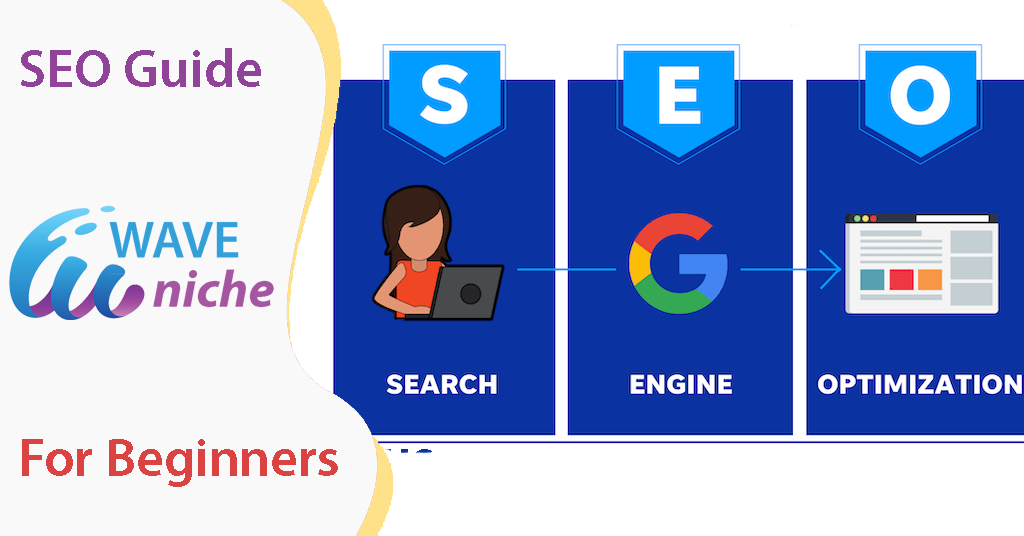Google’s search algorithm uses over 200 factors to rank websites by kayword. To give your website the best chance of standing out from the crowd, it is essential to conduct thorough, high-quality keyword research. Finding the right keywords that appeal to your target audience will allow you to develop and execute a keyword strategy, shooting your pages up the search engine rankings and generating reliable organic traffic.
In this guide, we will discuss the importance of keyword research and walk you through how to systematically find the best keywords for your content and how to ensure they align with user intent. To hone in on a particular topic, feel free to jump directly to that section using any of the links below.
What are keywords?
Keywords, sometimes referred to as SEO keywords, are terms and phrases used to establish and develop online content. From the potential customer’s perspective, they are words entered into the search bar that best describe the products or services they’re looking for or the question they wish to find the answer to. For the marketer, the keywords you carefully choose to include in your content directly inform search engines about the information contained on your webpages, providing a way to rank and suggest your website.
Keywords provide a variety of insights into the minds of your audience, revealing vital information such as what they want and why they want it. Typically utilized for search engine optimization (SEO) or general marketing, incorporating the correct keywords into your content can dramatically improve the success of your business. The goal is to have a customer’s keywords match the keywords on your website.
Why is keyword research important?
The keywords on your website define what your business is about and what you sell. However, the number and quality of keywords included in your content helps search engines such as Google determine where to display your website on a particular search engine results page (SERP). The higher you rank on the SERP, the more reach and traffic you will garner. In fact, the #1 result for each search on Google receives approximately 32% of all clicks. Even if you can’t be the top ranking website, it is still worth trying for the first few results. As the number of people searching online for products and services keeps growing, your favorable placement on the SERP will draw in more and more clicks over time. Between 2019 and 2020, the traffic for the 1,000 most visited pages increased by 22%.
Through keyword research, you can find the optimal keywords that are in demand but still niche, guessing what consumers want and providing it to them before they even realize it. Including high-quality keywords in articles, blog posts, or product descriptions can help push your website up the rankings, allowing you to attract a larger audience and beat out the competition. This organic traffic generated from the SERP can outperform even paid traffic or ads, producing leads after publishing for years to come.
Getting started with keyword research
Before you begin your keyword research journey to optimize your content, there are some keyword research fundamentals you should familiarize yourself with. First, it is crucial to understand what makes focus keywords and long-tail keywords different from regular keywords.
A focus keyword, like its name suggests, is the primary keyword you focus your strategy on. It is the main word or phrase that you purposefully include in the title, URL, meta description, and text of your website and hope search engines pick up on.
Long-tail keywords, on the other hand, contain 3 or more words. They are specific phrases that shoppers are more likely to use when they are further along in the buying cycle and have a clearer idea of what they want, bringing in more qualified traffic. When there is a lot of competition in the market, long-tail keywords become particularly valuable; they are a good way for websites to set themselves apart. Looking at the search terms “toaster” and “4 slice chrome toaster”, it is easy to imagine which will produce more precise results.
Other concepts that will help you conduct the most comprehensive and advantageous keyword include:
Keyword intent
Knowing how keyword intent plays into keyword research is an integral part of developing a keyword strategy. Because you know your business inside and out, you may not share the mindset of your target audience. Knowing the keyword intent is to put yourself in the shoes of potential consumers and truly understand the purpose of their search.
As you conduct your SEO keyword research, consider whether your content truly matches the consumer’s intent. Do they want to learn something? Are they looking for a specific company or website? Are they comparing products and almost ready to purchase? Or, are they prepared to buy now? A perfect match will compel the consumer to stay on your page for longer and help you rank higher on SERPs.
Learning your audience and figuring out why they want what they want will also help you utilize trigger phrases as a part of your long-tail keywords. Tailor your keywords with trigger phrases associated with different types of consumer intent. For example, if you are selling a product, transactional or commercial trigger phrases such as “best”, “buy”, “join”, and “compare” will help you rank for searches where people have more intent to buy.
Monthly search volume (MSV)
MSV is the average number of monthly searches for a keyword. Using keyword research websites and tools, you can look up the world-wide MSV of a keyword or even narrow it down to a specific city. While a higher MSV means more potential traffic for your website, it also implies heavier competition.
Topical authority
As search engines improve and more emphasis is placed on related terms, natural language, and quality content. You want to showcase your website’s expertise by providing in-depth, interconnected content. Consumers will want to click on your website if they consider you a trusted source of information for a certain topic. Authoritative content and a good reputation will help you rank highly on SERPs.
How to conduct keyword research
Now that you understand the importance of keyword research and have gotten acquainted with some of its most important terms and concepts, you are ready to get started. Follow these next steps to identify the keywords you should be targeting to attract the audience you want and create a foolproof keyword strategy.
1. Make a list of broad topics relevant to your topic
In this first step, you want to create a spreadsheet with general categories or “buckets” for the keywords you wish to rank for. These might correspond to product categories or anything you believe your target audience would be interested in. If you blog from time to time, you may already have some topics you cover regularly.
Keep this list short and simple, with 5 to 10 topics at most. It can be helpful to imagine yourself as a buyer looking for a product or service.
General categories for a website that sells natural and environmentally friendly products might include:
Healthy environment
Natural health
Non toxic home cleaning
Natural beauty
Healthy cooking
Natural pet health
2. Expand each topic with a list of phrases you think your customers use
Next, with these general categories at hand, it’s time to identify the terms and phrases your target customer might type into the search bar to locate information, products, or services.
If you already have data from website analytics software like Google Analytics or HubSpot’s Sources report, look through your organic search traffic bucket to identify keywords consumers already use to arrive at your website.
This is not meant to be a final list of keywords but an opportunity to brainstorm for data points to make your research more targeted and fruitful.
For the environmentally friendly website example above, under the category “Healthy environment”, you might list:
Compare air purifiers
Best water filters
Aroma diffuser
Essential oil diffuser
Nontoxic paint supplies
Hypoallergenic pillows
Natural ways to reduce allergies
How to improve indoor air
How to use sage
Create a list under each general category and add it to your spreadsheet. Feel free to ask your co-workers or employees for ideas, especially those who are customer-facing.
3. Find related search terms
There are many creative ways to add to your keyword lists.
Search a keyword phrase in Google and scroll to the bottom of the page, where you’ll see a list of related search phrases in bold.
For a deeper dive, click on one of the related searches and check out the list Google suggests at the bottom of that second page.
The website AnswerThePublic allows up to 3 free searches a day. It delivers a chart of phrases people are searching for related to your topic.
You can also type your keyword phrase into Google’s Keyword Planner or one of the paid tools listed below and see what other relevant terms people use.
4. Analyze the strength of your keywords
The easiest way to accomplish this next step is with Keyword Planner or a paid keyword research or SEO tool. Ahrefs, Semrush, Wordtracker, and Ubersuggest are some of the most popular. Wordtracker and Ubersuggest both have free versions you can use to start.
Here’s what you’re looking for when you analyze your keywords.
What is the exact search term? Make sure your keyword phrase matches the precise search term people use.
How high is the search volume? If no one uses a keyword phrase, it won’t do you much good to structure a strategy around it. Look for the highest search volume available.
How steep is the competition? The paid tools differentiate between competition for paid ads versus for organic search. You want a higher search volume with lower organic search competition. That’s the sweet spot.
Check for related terms you may have missed that have high search volume and low organic search competition.
5. Determine how you rank in your industry
If you’re competing against big brand names that already take up the first page of Google for most of the terms you’ve identified, you’ll want to alter your strategy to identify less competitive long-tail keywords.
Check the SERP for your most desired search terms. If it’s filled with solid brand names that have more influence and market share than your company does (at the moment), go back and refine your list with long-tail keywords.
The one exception to this strategy is if your competitors haven’t been publishing quality content. If you know you can outdo their content in length, quality, and layout, then you may be able to outrank them even if they spend more money marketing their brand.
6. Verify search intent
When a consumer enters a search query into Google, they are on a quest for something and every question needs a matching answer.
Make sure you understand your customers’ intent by typing your keywords into the search engine. What pages already rank for that phrase and what do they offer?
If a buyer is looking for information and you instead try to sell them a product, you may get a click, but they’ll bounce quickly, which will hurt your ranking. However, if a shopper is ready to buy and you deliver a product page, they’ll happily make a purchase.
Make a note in your spreadsheet about the buyer intent for each keyword phrase, or establish a habit for you or your team to check the intent of a keyword before creating content using it.
Keyword research FAQs
How do I get good at keyword research?
Other than getting a better grasp on who your target audience is and what exactly it is that they want, if you wish to improve at keyword research, it is essential to track your results and analytics. For example, using the data on Google Analytics, you can easily discern which keywords and landing pages generate the most traffic and which ones are underperforming. With this knowledge, you can come up with a plan to correct and enhance your strategy. Mailchimp and software platforms like Semrush also offer in-depth articles, guides, and courses you can use to hone your keyword researching skills and learn about broader SEO best practices.
How can I do free keyword research?
You don’t need to spend money or have a subscription to conduct quality keyword research. There are many free tools online that can help you find the right keywords to boost your content. Google Trends, Keyword Surfer, Semrush’s Keyword Magic Tool, and Moz’s Keyword Explorer are just some of the free tools readily available to help you gather vital information for marketing and SEO.
How can I maintain keyword rankings?
To maintain keyword rankings, you should always stay up to date on algorithm changes and look for ways to refresh and improve your existing content. No matter how good your content is, it needs to be nurtured to keep up with the constantly changing landscape of the search engine results page. Identifying new opportunities or trending keywords can even help your content rank higher than it did before.
Key Takeaways
Conduct keyword research to scope out trends and blind spots, understand user intent, and find the optimal keywords to build your content around. However, remember that keyword research is only the foundation of your SEO strategy. To truly stand out, ensure that every blog post, article, and product description is more valuable, readable, and complete than your competition’s. Pay attention to the layout and on-page SEO of each piece of content and make your website easy to scan and mobile-friendly.
Also keep in mind that organic SEO is a long-term process. While you may rank quickly for specific terms or phrases, most businesses gradually climb up the SERPs. Level up your SEO strategy and grow your audience with Mailchimp’s tools and expert guidance. Try our marketing CRM software to create stronger connections with your customers from day one or track your performance with our digital marketing analytics reports.




